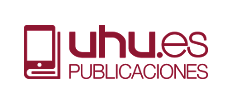The reception of the traditional tale in the Primary classes and in the Training Centers of Teachers.
Active readings to return to the tale.
Keywords:
Abstract
This article has as its main objective to analyze the reception of the traditional story tale in the readers and readers of the 21st Century to detect the elements that produce in them the greatest challenge in order to propose a way to return them to the story based on dialogic reading, rewriting and the textual recycling. For that, after a bibliographical review on the reception of the account at the end of the 20th Century and the first quarter of the 21st Century, activities have been designed to carry out, on the one hand, in classes at the Faculty of Education and, on the other hand, in primary third level classes. Thus, by means of a qualitative methodology and research-action, it has been possible to gather information on the reception of the traditional tale in university and medium-level students. The conclusion to which we have come is that what the greatest challenge generates in relation to the traditional account are cultural markers left by the collectors, but that current readers and female readers, by means of an active and creative reading, are perfectly capable of detecting and modify these markers respecting the structure and conventions of the traditional tale.
Downloads
Altmetrics
References
Bettelheim, B. (2010). Psicoanálisis de los cuentos de hadas. Ares y Mares, Editorial Crítica.
Cañadas, T. (2020). El cuento tradicional y su percepción actual, Educación y futuro, 42, 15-35.
Cerda Gutiérrez, H. (1984). Ideología y cuentos de hadas. Akal.
Charles, M. (1995). Introduction à l’étude des textes. Seuil.
Citton, Y. (2007). Lire, interpréter, actualiser. Pourquoi les études littéraires? Amsterdam.
Colomer, T. (1996). Eterna Caperucita. Cuadernos de literatura infantil y juvenil, 87, 7-19.
Cramer, F. (2015). What is ‘Post-digital’?. En Berry D.M., Dieter M. (eds.) Postdigital Aesthetics. Palgrave Macmillan, (pp.11-24). https://doi.org/10.1057/9781137437204_2.
Domínguez García, B. (2018). Hadas y brujas, la reescritura de los cuentos de hadas en escritoras contemporáneas en habla inglesa. Universidad de Huelva Publicaciones.
Dorio, I., Sabariego, M., & Massot, I. (2019). Características generales de la metodología cualitativa. En Bisquerra, R. (Coord.), Metodología de la investigación educativa (pp. 267-284). Editorial Arco.
Fernández Rodríguez, C. (1998). La Bella Durmiente a través de la historia. Universidad de Oviedo.
Gamal Eldin, Sh. S. (2012). El contexto cultural en la traducción de la LIJ: la adaptación Cuentos para contar de Naguib Mahfuz. Hika: Estudios de traducción, 11, 113-132.
García Rivera, G. G., & Gaviro, A. B. (2019). Narrativa transmedia y textos tradicionales para la educación literaria. Contextos Educativos. Revista de Educación, (23), 161-178.
Gascón, E. L. (2018). El cuento de los Hermanos Grimm «El Rey rana o Enrique-el-férreo»: recepción del lectorado infantil y de los enseñantes en España. Propuestas para la enseñanza desde una perspectiva de género. Ondina-Ondine, (1), 228-260.
Herrero Figueroa, M. A. (2008). La literaturización del cuento de tradición oral en el sistema LIJ: parámetros para su estudio crítico. Tabanque: Revista pedagógica, (21), 101-119.
Llamas, M. (2020a). Estado de la cuestión sobre reciclaje. En M. Llamas (Presidencia) Reciclaje, postdigital, postglobal: definiciones para el ahora. Simposio organizado por el Grupo LEETHI. Universidad Complutense de Madrid. Madrid, España.
Llamas, M. (2020b). Postdigital ahora. Serie Cuadernos del ahora, 1. https://eprints.ucm.es/id/eprint/61054/13/Llamas%20Ubieto.%20Postdigital%20ahora_Cuadernos%20del%20ahora.pdf
Llergo, E. & Ceballos, I. (2022). Diversas pero modeladas: el cuerpo de las protagonistas de la novela infantil y juvenil actual, Ogigia. Revista electrónica de estudios hispánicos, 32, 169-191.
López Valero, A., Encabo, E., Jerez Martínez, I., & Hernández Delgado, L. (2021). Literatura infantil y lectura dialógica: la formación de educadores desde la investigación. Octaedro.
Luengo Gascón, E. (2018). El cuento de los hermanos Grimm «El rey rana o Enrique -el- férreo»: recepción del lectorado infantil y de los enseñantes en España. Propuestas para la enseñanza desde una perspectiva de género. Ondina-Ondine, 1, 228-260.
Mendoza Fillola, A. (2011). La investigación en didáctica de las primeras lenguas. Educatio Siglo XXI, 29(1), 31-80.
Mendoza Fillola, A. (1997). El cuento y sus aportaciones al intertexto del lector [ponencia]. En I Seminario Internacional Cuentos y leyendas de España y Portugal= Contos e lendas de Espanha e Portugal. Editora Regional de Extremadura, (pp.129-140). Extremadura, España.
Martín Hervás, M. A. (2023, 22 mayo). Reescrituras de cuentos maravillosos de tradición hispánica: los casos de Juan el Oso y Los siete cuervos [ponencia]. Seminario El reciclaje literario como herramienta didáctica. Universidad Complutense de Madrid, España.
Morera Lianez, L., & Del Río, C. (2012). Thrice Upon a Time: Feminist, Postfeminist and Lesbian Revisions of Fairy Tales: Anne Sexton, Angela Carter and Emma Donoghue. Universidad de Zaragoza.
Parsons, L. T. (2004). Ella evolving: Cinderella stories and the construction of gender-appropriate behavior. Children's literature in education, 35 (2), 135-154.
Pinkola Estés, C. (2012). Mujeres que corren con lobos. B de Bolsillo,
Pisanty, V. (1995). Cómo se lee un cuento popular. Paidós.
Regueiro Salgado, B. (2020). El reciclaje de los cuentos tradicionales y populares en los Cuentos clásicos feministas, de Ángela Vallvey. Una mirada postfeminista y postdigital a la tradición. En E. Saneleuterio, (ed.). La agencia femenina en la literatura ibérica y latinoamericana (pp. 339-358). Iberoamericana Vervuet.
Regueiro Salgado, B. (2022). El reciclaje digital de los cuentos tradicionales como traducción de la tradición al siglo XXI. Tejuelo. Didáctica de la lengua y la literatura. 36, 127-150. https://doi.org/10.17398/1988-8430.36.127
Rodríguez Almodóvar, A. (1999, 2015). Cuentos al amor de la lumbre. Alianza Editorial.
Secreto, C. (2013). Caperucita y la reescritura posmoderna: el camino de la anagnórisis. Cuadernos del CILHA, 14 (19), 67-84. http://revistas.uncu.edu.ar/ojs3/index.php/cilha/article/view/4058
Vallespín, I. (2019). Vetan a ‘La Caperucita Roja’ por sexista. https://elpais.com/ccaa/2019/04/10/catalunya/1554930415_262671.html

By submitting a proposal, the author agrees to the following terms:
- a) The author retains the authorship rights, granting the journal the right of first publication of the work.
- b) The texts will be disseminated with the Creative attribution license Commons 4.0. BY that allows you to share, copy and redistribute the material in any medium or format, as well as adapt, remix, transform and build on the material for any purpose, including commercially.







